
table of contents
- Orchids
- Grower orchids
- durability
- Do it Yourself
- Color injection
- Coloring of irrigation water
- Water bath staining
- Vase staining
- Dip coloring
- Coloring material
Blue orchids are artificial for some, a color highlight for many others. They are not naturally grown in blue, but are artificially colored. The plant expert explains everything there is to know about it and how you can easily dye your orchid blue yourself.
Orchids
The delicate orchids in white, pink and nuances lilac are mostly inconspicuous in terms of color. If you want to change this and set a strong color accent with your orchid plant, you can now get it in blue. In terms of price, they are usually well above the uncolored orchids and you don't get a guarantee that the color will last long and stay strong. But you can also easily dye your specimen yourself or re-dye colored plants from a store.
Grower orchids
Blue is a very popular color that is often used in the home for furnishing and / or decoration. A flower as noble as an orchid in blue is particularly popular with flower lovers. The dealers have recognized this and with the brief boom in rose dyeing, they have now also found ways to dye the sensitive Orchidaceae.
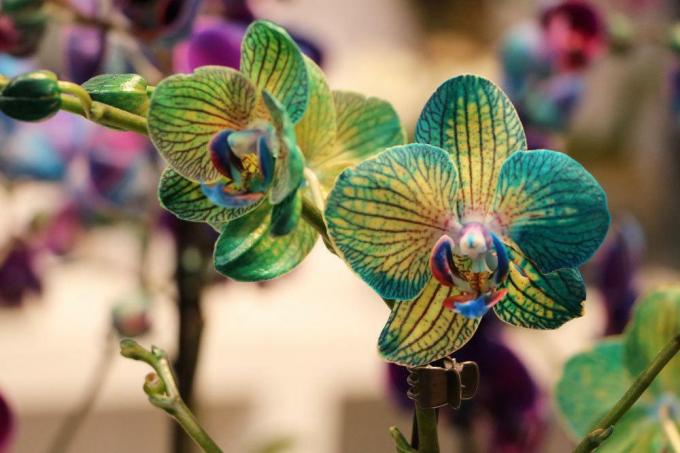
To dye
The cheapest option for breeders is simple coloring. This results in different shades of blue, which range from a bright, strong blue to light blue and turquoise. Reputable dealers use non-toxic paints. Dubious people often resort to simple spray cans from the hardware store. In terms of price, they are usually a few euros higher than the uncolored copies.
Inject
It is more expensive with a coloring technique that comes from the hands of a Dutch breeder who has applied for a patent on it. The blue color is injected into the conduction pathways of the flowers. A special type of color is used for this, for which the patent is also being processed. However, other colors can also be used for imitation.
The one that is very popular in many cases on the German flower market Phalaenopsis offered, which sometimes only costs a few euros and injected for plants with a blue color, customers are asked to pay for 30 to 50 euros. Other varieties are also available, such as the Anthurium andreanum or the Euphorba pulcherrima, which are roughly in the same price range.
durability
Injected paint
Injecting blue paint has a significantly longer or more reliable shelf life. Once injected into the conduction pathways, it does not become weaker due to external influences, as can be the case with the colored specimens. The principle of durability can be compared roughly with hair coloring and hair tint, whereby the flower coloring is equated with the hair tint because it is this can be washed out slowly with water, while the hair color only grows out with new hair, which is the case with the flower color with new bloom he follows.
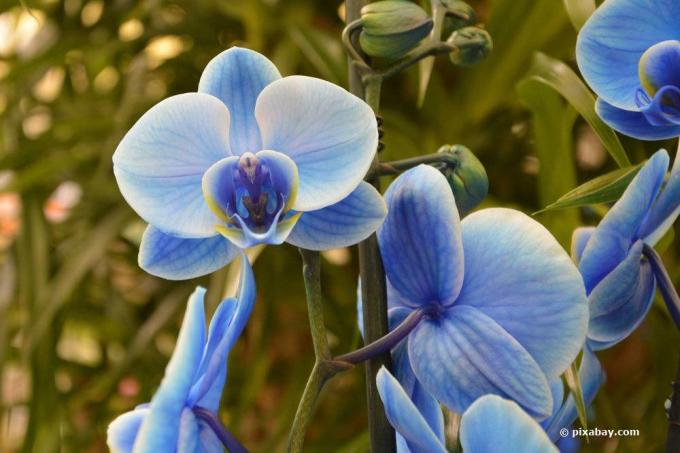
coloring
The orchids only thrive in a warm, humid microclimate. This is simulated using special cachepots, the special construction of which means that moisture rises continuously to the top of the flowers. Depending on the quality of the coloring of the flowers, it often happens that a The initially strong blue has clearly faded after a few days and has completely disappeared to the point of wilting can be.
Others, on the other hand, only slowly fade due to the continuous supply of water. The blue dye is diluted more and more with water so that the color intensity decreases. The fact is, however, that in both process technologies the color generally only exists at most for the existing flower. As soon as a new flower appears, it naturally corresponds to its original color.
Spray coloring
Dyeing with a spray bottle is difficult because most of the moisture on the flowers drips off and therefore does not hold. Some dubious dealers / growers therefore roughen the petals or put a layer of wax over them so that the color is accepted. Unfortunately, this is only the case superficially and prevents the colored flowers from growing. In addition, the spray paint and pre-treatment damage the plant. Chemical paint penetrates the inside of the plant and destroys the flower.
Therefore, do not spend any money on an orchid with spray coloring and refrain from trying to do this yourself at home. The chances are good that you will then not enjoy it for long and will ultimately have to dispose of it in the trash.
Do it Yourself
It is often not possible to find out which dyeing technique was ultimately used for an orchid plant in the trade, unless you buy directly from a reputable grower.
Therefore, if you have bought a blue version, you do not know whether it will still be blue next week or whether the whole plant is still alive. That is why it makes sense to lend a hand with the mostly somewhat more expensive orchids so that you know what to expect. There are various options available to you for dyeing, which are also used by reputable breeders.
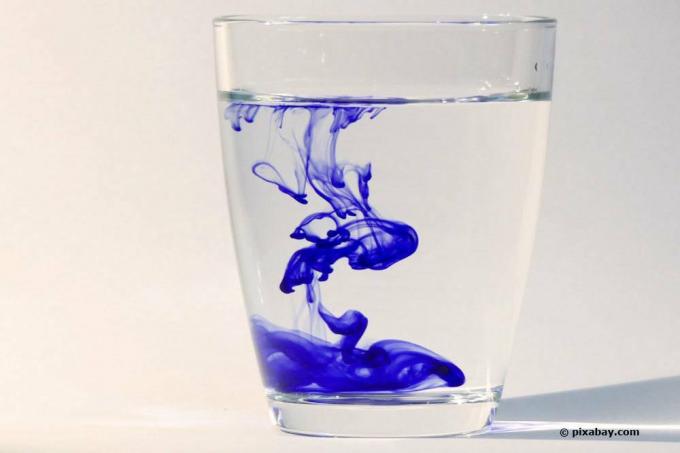
Color injection
After the development of the Dutch breeder and the injection of color, the coloring is not quite as straightforward if you are not currently working as a nurse.
To do this, you need the following accessories:
- Injection container
- Infusion set
- blue water soluble food coloring
For staining, do the following:
- Fill the infusion bottle with food coloring - if necessary, dilute with water
- in the case of powder, dissolve in water beforehand according to the manufacturer's description
- Food coloring must be thin enough that it can flow through the hole in the injection needle
- Hang up the infusion bottle next to the orchid with the opening facing down
- ideal is a suspension point that is above the plant (more flow pressure)
- Pierce the injection needle with the pointed side down into a flower stem
- Do not pierce the stem
- Fix the infusion needle on the flower stalk
- insert the other end of the infusion set into the infusion bottle
- Turn the wheel on the infusion set at least one full turn
- optimal coloring time: as soon as buds appear
Coloring of irrigation water
The coloring of the irrigation water is a very simple matter. Either blue food coloring or ink is used here, which is filled into the water container every time it is poured. In this way, the blue color slowly moves over the roots into the interior of the plant. Stems and other parts of the plant apart from the flowers are not colored blue because the green contrast is too dominant.
However, a little patience is required for this method, as the plant only changes its color with the respective Absorb the amount of irrigation water without being able to soak up full of it and part of it ends up in the water reservoir and evaporates there.
Water bath staining
The Orchidaceae takes on the color faster in the water bath than with the watering technique. Here a water bath is made up vigorously with blue paint. Again, ink and food coloring are the first choices.
How to do it:
- Take the orchid out of the planter
- put in the water bath
- Without a culture pot, the plant soaks up the color even faster / more intensively
- Roots should be completely immersed in the water bath
- Waiting time: depending on the size of the plant and the desired color intensity, three to five hours
- when the desired color shade is achieved, drain the plant well and repot
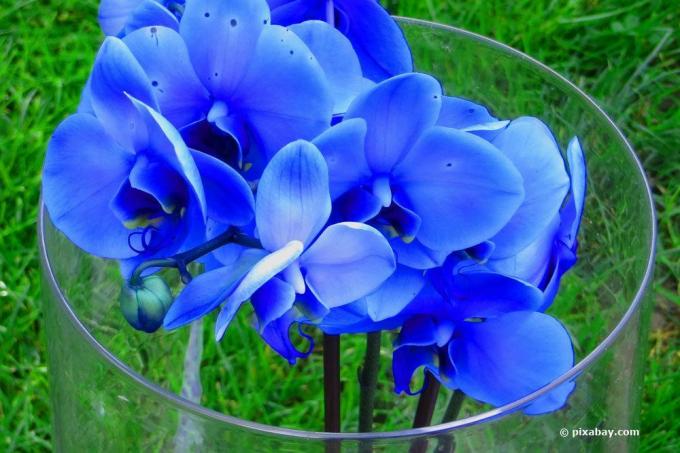
Vase staining
The vase coloring, which is particularly suitable for cut orchid blossoms, works in a similar way to the water bath coloring. To do this, simply fill the vase with blue ink or food coloring and distribute it well in the water. The color now reaches the petals via the flower stalk, where they quickly reveal the color. While a cut orchid flower stalk is placed in pure water, after a few hours usually a hanging one As a result of the flower head, experiences with colored water have shown that the flower can stand upright for days in it remain. So far there is no scientific explanation for this, but it has been proven several times in practice.
Dip coloring
Dip dyeing may be an alternative to the dyeing methods mentioned. Again, a water bath with ink or food coloring is prepared and the orchid is immersed either upside down or only with the flower. The disadvantage here, however, is the inconvenience and the long waiting time for the petals to take on the color. The latter happens only to a minimal extent, so that a strong blue can usually not be achieved with this method. A delicate pastel shade is more obvious here.
Coloring material
As already described under “Spray coloring” in the “Durability” section, spray paints are in no way suitable for coloring orchid flowers. But other types of color are not necessarily recommended or do not produce the desired effect.
Watercolors
With watercolors, there can be no dyeing methods such as the water bath, pouring or vase dyeing sufficient color intensity can be achieved in order to achieve a satisfactory coloration of the orchid flowers achieve. It is not possible to brush the flowers with watercolors on the smooth leaf sides. The paint would roll off. Only a dip in a highly concentrated water color solution could bring at least a little color to the petals.
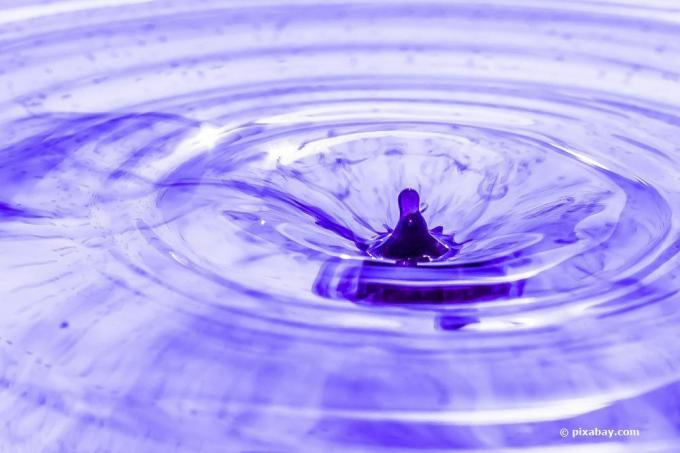
Food coloring
Blue food coloring is best for coloring the petals. It is advisable to prefer liquid products to powder here, as depending on the product quality, this may not be absolutely dissolves completely and, under certain circumstances, fine grains clog the narrow pathways in the stems could. This would not only prevent the color of the flowers, it would also make the orchid life-threatening damage, as no nutrients or moisture reach all parts of the plant via these routes could. Food coloring is basically free of toxins and pollutants, so that it has no influence on plant life or functions.
ink
When choosing ink for orchid coloring, proceed with caution, as there are different types of inks, not all of which are well tolerated by the delicate flower.
Printer ink
Printer ink, also known as InkJet ink, is usually provided with dyes that are usually not subject to a safety test. It also contains chemicals so that, for example, printer heads do not clog and dry quickly on paper. Orchids can be very sensitive to these chemicals. For this reason, printing ink should not be used to dye flower blossoms.
Writing ink
The situation is different with a water-based ink, such as is used for fountain pens and writing on paper. These are usually non-toxic and free from harmful chemicals that the Orchidaceae may not be able to tolerate well. In a few exceptions, they contain slightly irritating preservatives. Here you should use a branded product such as Pelikan or Lamy to ensure that it does not contain any irritant substances.
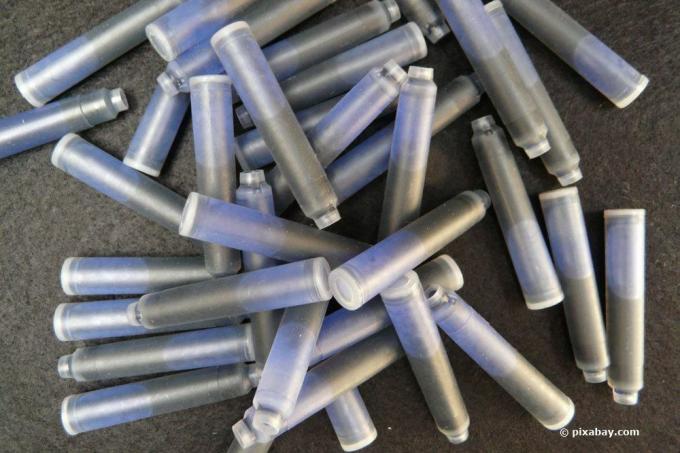
Solvent ink
A solvent ink, also called solvent ink, would be ideal for spraying or dipping If it weren't for the solvents that this ink contains, it is suitable for coloring smooth surfaces can use. Solvent ink is known, for example, as a stamping ink or for writing on glass or foils. However, the ingredients are such as ethanol, alcohol, isopropanol, or methyl ethyl ketone Ethyl acetate is not suitable for the supply circuit of a sensitive orchid plant reach. It is absolutely advisable here: Steer clear of solvent-based inks!


